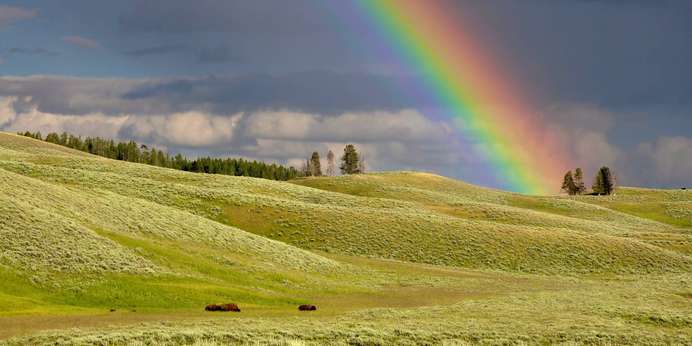
When a prism breaks light apart, it shows the visible spectrum in which each color blends into the next. This spectrum is called ROY G BIV, an acronym for the rainbow’s colors:
- Red
- Orange
- Yellow
- Green
- Blue
- Indigo
- Violet
The spectrum is derived from the color circle with the addition of the tertiary color indigo. Each color is unique in its frequency measurements and the values and meanings attributed to it by society.
Frequency and Exact Color Measurements of the Rainbow
Light travels in waves, and its frequency is the number of wavelengths that pass a given point each second. A shorter wavelength results in a higher frequency and vice versa. Humans can see light between about 400 and 700 nanometers (nm) — the visible spectrum. Because each color has a different wavelength and frequency, each color of light separates and becomes visible when passing through a prism.
The ROY G BIV wavelengths are as follows:
- Violet: 380 to 450 nm
- Blue: 450 to 495 nm
- Green: 495 to 570 nm
- Yellow: 570 to 590 nm
- Orange: 590 to 620 nm
- Red: 620 to 750 nm
What Does the Order of the Colors of the Rainbow Mean?
The rainbow’s color order is ROY G BIV. Red has the lowest frequency at the top of the arc, and violet has the highest frequency at the bottom of the arc. When light passes through a prism, it always refracts the different colors in the same order because each wavelength bends at a unique angle.
Though the order of the colors will always be the same, the way the spectrum is defined has changed over time. Since the wavelength for indigo is similar to blue and purple, it is generally omitted from the rainbow.


